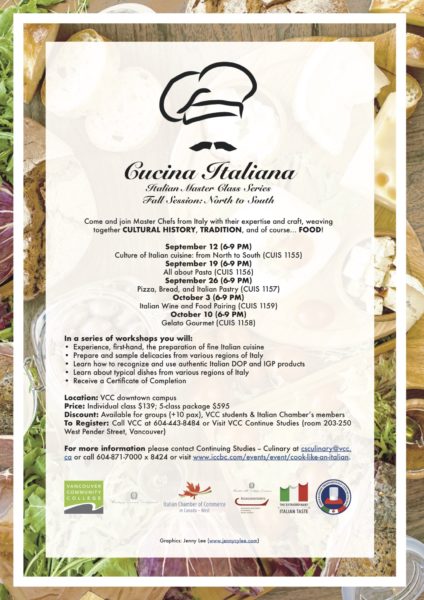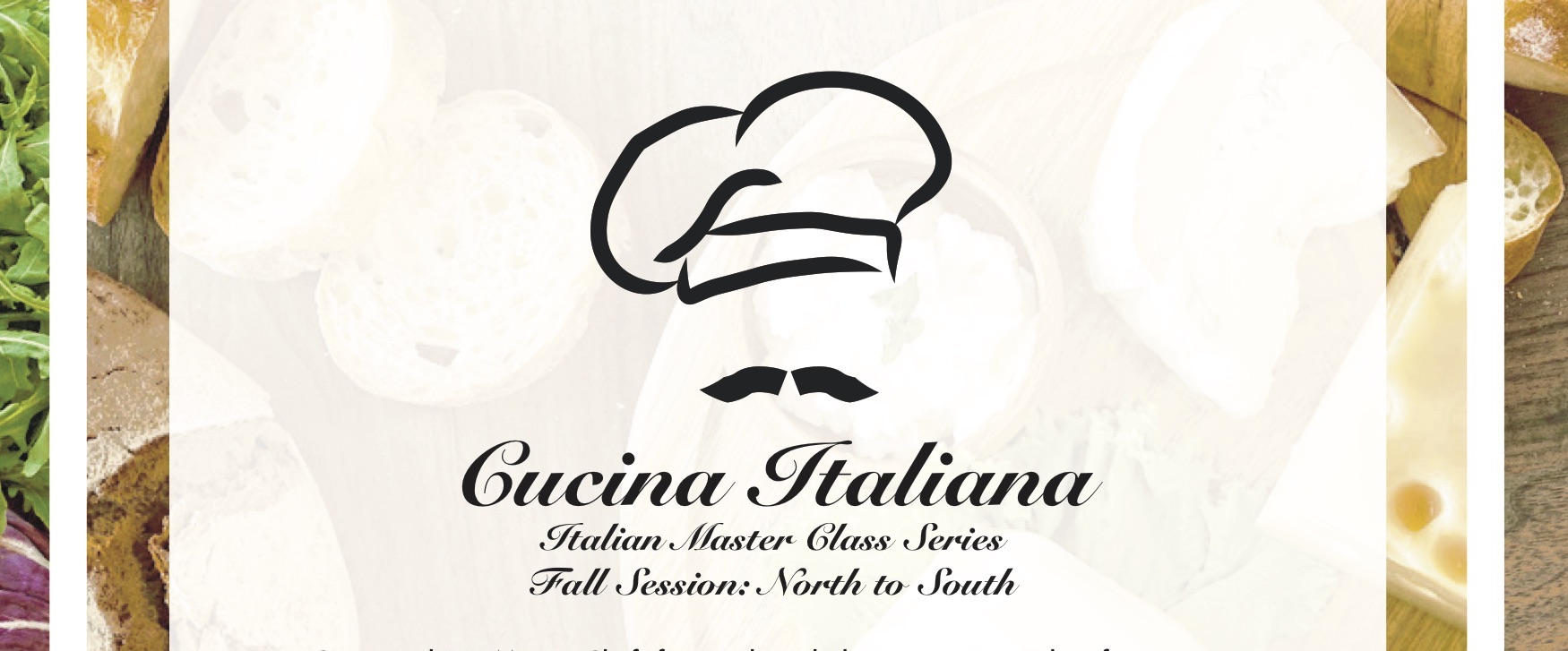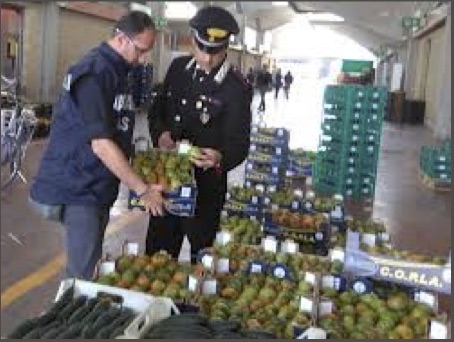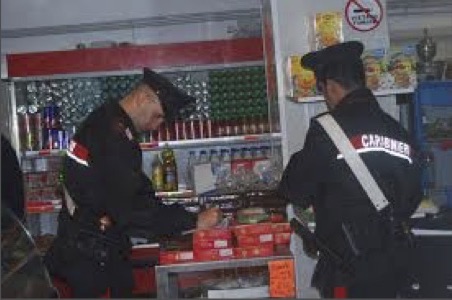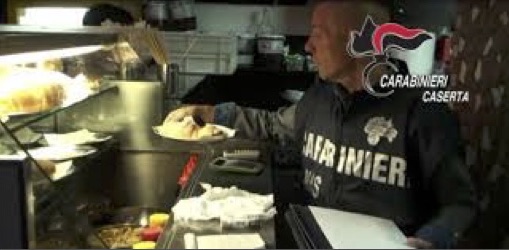I was fortunate to have been invited to attend the first of five Italian Master Class Series Fall Session Culture of Italian Cuisine from North to South courtesy of The Italian Chamber of Commerce in Canada – West. With thanks to Chef Giovanni for the comprehensive detail of the evening.
CHEFS
CHEF GIOVANNI TRIGONA AND LADY CHEF LAURA TRIGONA
Salve. My name is Giovanni Trigona, I’m responsible for the A.P.C.I. in Canada Associazione Professionale Cuochi Italiani I worked at the Italian Kitchen on Alberni and now at Trattoria Burnaby as Chef and Maître D’. I’m a multi task manager, Restaurant Manager, Sommelier specialized in pairing Italian wine and food, F&B. Chef Laura is Italian Canadian Chef.
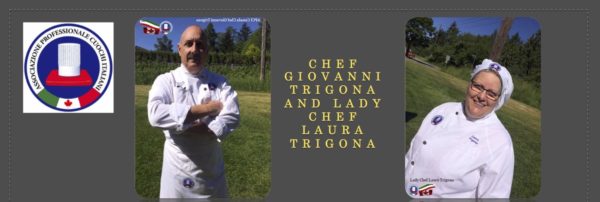

Words from Chef Giovanni Trigona “I would like to talk about: The CULTURE, HISTORY, TRADITIONS & CURIOSITY OF THE ITALIAN FOOD”
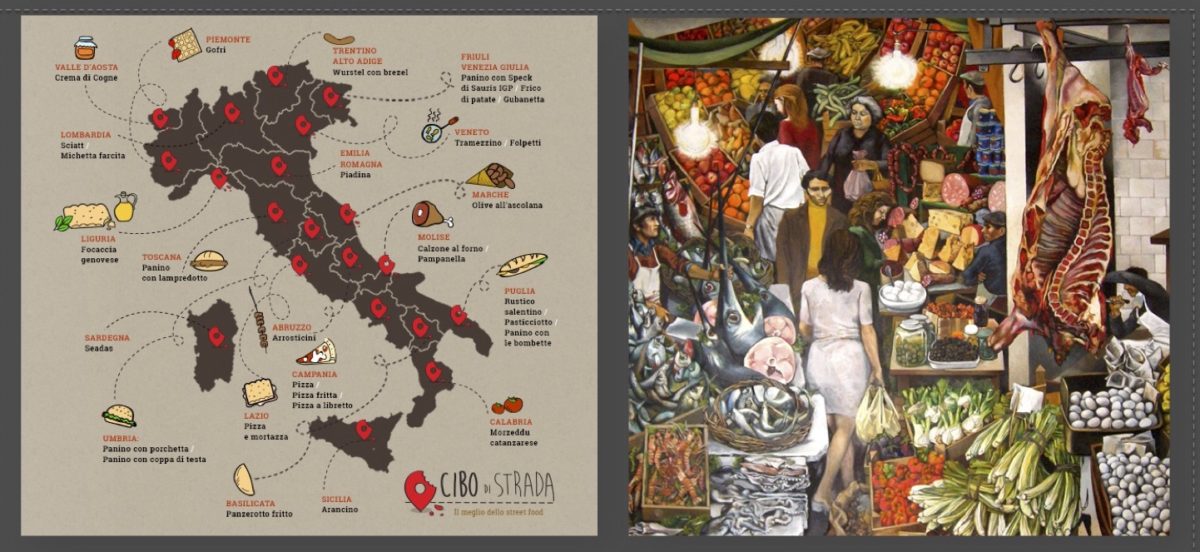
If you travel to Italy from North to South and islands included, you will find millions of historical information and influences. Back in time, this Country was “invaded” from many Nations near and far away. From the Mediterranean area, North African, Arabic, Greek, Turkish, Spanish, and from the Land: France, Austrian and Sweden, with Federico di Svevia. Plus you need to consider the mutual border, France, Austria, Svizzera and Yugoslavia. All of them, left in our culinary history and culture some parts of their culinary culture. Also, the religions played an important part as well, for example, Muslim.

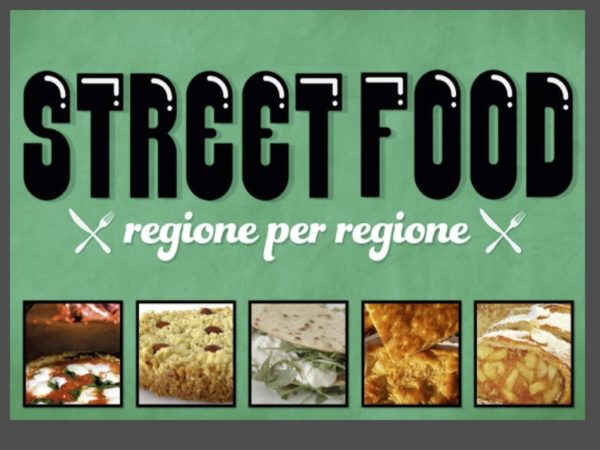
SICILIAN STREET FOOD
Let’s start from Sicily, in Palermo (I’m Sicilian) there are two markets that are very important and the oldest in the world, Vucciria and Ballarò who have Arabic origins. Among the bancarelle greengrocers, fishmongers, delicatessens, screaming, colors and baskets, you will find venders yelling to the people for their already cooked items and take-away. The housewife, can buy from fruttivendolo, artichokes, corn already cooked (and hot), Mussu I purcu, pork parts in gelatine, or the fishmonger, including fresh fish caught in a few hours, where they immerge live and fresh octopus, that you can take home, or as an appetizer you can eat there, only with a pinch of salt and lemon, clearly Sicilian.

As well as for breakfast, then you can purchase a Mafalda (which got its name in 800s in honor of Mafalda di Savoia), typical panino topped with sesame seeds, or called Giuggiulena, Sicilian-Arabic word. The Mafalda is also called “bread for travel” sandwich to go, usually stuffed with Panelle (fried chickpea flour pancakes, of Arab origin) and croquettes (potato cigar shape of French origin).
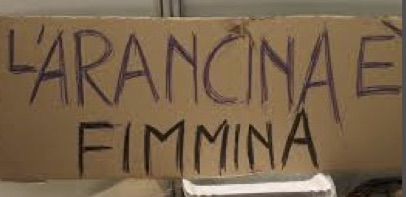
Among the local street food, and because there was not a lot of choice of food, the Popolo, created some simple plates, was made from the 2nd, 3rd or trimmings from the animals, pork, sheep, or beef.
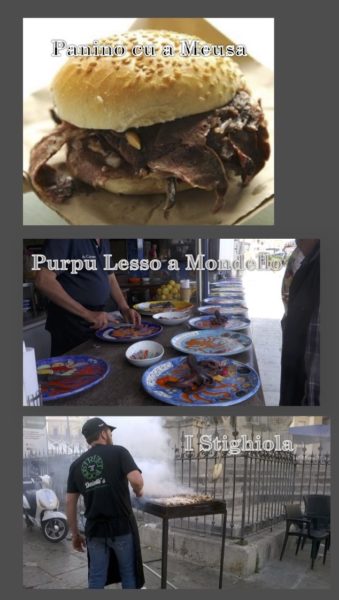
Those are a MUST if you visit Palermo:
The “PANINU KA A MEUSA”, the PANE e PANELLE or the PURPU a Mondello, or the STIGHIOLA.
I will translate for you, but, it’s better if you go to Sicily, to learn this terminology.
Pane Ka Meusa, is a slow cooked spleen, in its fat, sold on the street, and Stigghiola is like shish kebab, sold on the BBQ, place usually on the back of a Bike. Really street food to go. The smell of all those “delicacy” is intense and distinct.
Parpu Lesso a Mondello I Stighiola

Then as you travel from Sicily to Calabria, Basilicata and Puglia, you will find the influences of Greek, Arabic France, and the daily street food is still a necessity and comes from Land and Sea; Fegatini mix of lungs, liver, heart, wrapped with gut filled with pecorino and parsley, cooked over charcoal. This dish that is sold in all the street from Bari to Taranto, and from that they created a Cazzomaro or Marretto. Bombette a rolled slice of capocollo meat filled and wrapped with, soft cheese. Pucce, sort of panino made only with semolina and water, cooked in a wood oven but only with the branch of olives, served hot with local salami. This is only a few plates, of our street food, from the area of southern of Italy.
La cucina del NORD d’Italia
Our journey into the kitchen of northern Italy begins with Liguria: a strip of land, forced into the mountains and the sea, whose cuisine expresses the natural union between these two souls of its territory. We can state that fish and herbs are the basis of Ligurian gastronomy.
An absolute emblem is perhaps the pesto that is used both as a sauce for seasoning pasta and added to vegetable soup. Of great importance are also salty pies (Torte salate) with vegetables, the most famous of which is the so-called Piscialandrea. Important is also the focaccia, typical of these places and widely imitated elsewhere. Ligurian sea food is full of crustaceans – red prawns are a dream, sang Paolo Conte-, and blue fish: renowned are the so-called whites and moon fish. Apparently poor, because made of simple and common foods, Ligurian cuisine has been enriched with external culinary uses thanks to the importance of Genoa in the past. The use of baccala, for example, has remarkable similarities with Portuguese and Provencal cuisine.
Going north we go to one of the most refined kitchens in Italy: the Piedmontese. In it, the use of butter and lard, the consumption of raw vegetables, the great variety of cheeses and the widespread use of truffles and garlic are remarkable. The cuisine of this region has strong peasant roots, but at the same time assumes a high valorisation of its products and affects the influence of French cuisine. Another distinctive food is rice, cultivated in the province of Vercelli, called “the risaia d’Italia”.
Our culinary journey begins with the famous cauda bath, a dish symbol of friendship and the pleasure of being together. Bagna Cauda means sauce and cauda is warm; The dish, in fact, is hotly eaten with intimate vegetables, anchovies and bread.
Among the rice dishes we remember the so-called paniscia, and then the boiled, the refreshing truffle of Alba and the gianduiotti.
Pushing northwest, we enter Val d’Aosta, whose cuisine depends, even more than many other regions, on a very isolated territory that has in the past had little contact with the outside. Its most important feature – the only one in Italy – is the absence of pasta, due to the lack of wheat. Another element that is scarce in the dishes of Valdostan cuisine is oil, replaced by butter and other fats of plant and animal origin. Local products are essentially mountain grain, dairy products, meats and derivatives of cattle and pigs. Some products have crossed the regional boundaries, well known are Fontina cheese, Fondue sauce and the renowned mont blanc. (French influences)
We enter Lombardy. This vast area combines gastronomy of very different provinces with a common denominator: freshwater fish, milk, cheese and butter, beef and pork, rice and maize. The Lombard cuisine is the kitchen of boiled and boiled stew, with the slices suitable to accompany polenta, rice, stuffed pasta, butter and bacon.
Typical Lombardy specialities are the büsèca (tripe); the lügànega (sausage), and the chicken soup.
Take a closer look at this vast territory, we can find Milanese risotto, cutlet and panettone in the Milan area. In the Cremona area are the pumpkin tortellas. Typical Cremonese specialties are the mustard, mustard, as accompaniment of mixed boiled and (torroncini) nougat. In the area of Bergamo and Brescia we mark the famous polenta and ori . And it is the polenta that is the key element of Lombard cuisine and plays an important role in the first courses, accompanied by seconds and even in sweets. In the Po Valley valley we recommend the pavese soup and the salami of Varzi. In Valtellina are so-called pizzoccheri and tarenta polenta.
Leaving Lombardy, and going east, we will enter Trentino Alto Adige. The cuisine of this region is still little known today. Famous are the Tirtlen, fried tortellini, filled with spinach, sauerkraut and cottage cheese. Another interesting dish is the canederli soup with beef liver.
Panada is a very popular soup in this region. Also important are slices and typical cheeses. Among slices, the production of salami and sausages is very important, with the famous San Daniele ham and Sauris speck production. Among the cheeses, we suggest Lagunta Algunder Butterkase, the Almkäse and the Toblach. (German influence)
Friulian cuisine is affected by the morphology of the region that goes from the sea to the mountains and the diversity of cultures and populations that have inhabited it, contributing significantly to a differentiation of the various culinary traditions.
Great space has polenta, bean soup with barley or herbs, dumplings and canederlips.
The business card of Venetian cuisine is definitely the cod. Another bouillon product is the famous Radicchio Treviso, which is recommended to eat in the omelette or grilled.
As far as seafood is concerned, let’s note the scallops to the Venetian. Other noteworthy dishes are bigoli and rice: the main ingredients used in the preparation of the first dishes of the Veneto cuisine.
Returning to baccalà, the baccalà to Vicenza is very important, perhaps the most famous and typical recipe of these lands.
Other ways to enjoy baccalà are fried or roasted veal sausages. Another classic recipe is the Venetian liver with added onions. Even in this region, somewhat like in almost all of northern Italy, we find the inevitable polenta to be a common denominator.
Going further south we will go to Emilia Romagna, the last region we will visit in this section. Although it is administratively a single region, Emilia and Romagna deserve, at least from the gastronomic point of view, a clear distinction.
We start from the Emilian cuisine, or rather from the various cuisines: the result of nearly eight centuries of autonomy in the Emilia-Romagna cities exercised on a vast territory and the role of real capital played by the major centres.
Emilian cuisine – at least the most famous – is a solid, tasty and generous cuisine. It is also known as Bolognese cuisine, a name that evokes restaurants and trattorias spread throughout Italy; synonymous with abundant and unbridled cooking.
The tradition of Emilian cuisine inherits those characters of opulence and prodigality for which Bologna (and with it the entire region) is called Grassa.
No doubt, the first dishes are the flagship of Emilian cuisine.
First of all the pasta, thin leaf (water is not allowed) that are seasoned with meat and tomato Bolognese sauce (which do not use tomatoes). The banner of Bologna and Modena cuisine is the tortellini belonging to the large family of stuffed and broadly populated leaves in all central-northern Italy. Tradition wants it to be served in meat broth.
Among the other, stuffed pasties are the hazelnuts or cappelletti that are distinguished by the particular form and for the insertion in the filling of the mortadella and the ham, the famous Parmigiano Reggiano and the nutmeg or even with ricotta and spinach. Also worthy of note are the agnolini of Piacenza and the pumpkin tortelli, very similar to the mantovani.
The cuisine of Romagna, compared with the Emilian, is much poorer and more simple. The poverty of this kitchen has been conditioned by the presence of small unstable lords, with shorts and canteens of non- luster, and then by the long domination of the State of the Church.
The characters of the Romagna cuisine are very simple and pleasant; the contribution of maritime culture is of little weight and extends only to the coastal area. The number of dishes is modest. But it is this land that gave birth to Pellegrino Artusi, the author of the famous Science in Cooking and the Art of Eating Good (1891), a collection of recipes of traditional cuisine in northern Italy, a text written in a pleasant language that, since its publication, has known a great popularity.
The culinary cuisine of Romagna grows, for example, the use of edible plants, both cultivated and spontaneous. Here too is the home-made pasta culture dominant; From the leaflet, you get the pasta, the malted ones, the gourds of Ravenna, as well as cappelletti and ravioli, stuffed with spinach and cottage cheese. Always with the eggless pie are the famous stutterers.
In the culinary art of the puppy has full citizenship also the pronunciation of the e.
The gastronomic fish culture, albeit restricted to the coastal strip, is crucial in this region. The summit of Romagna’s seafood is represented by the so-called brodetto.
From the Sea
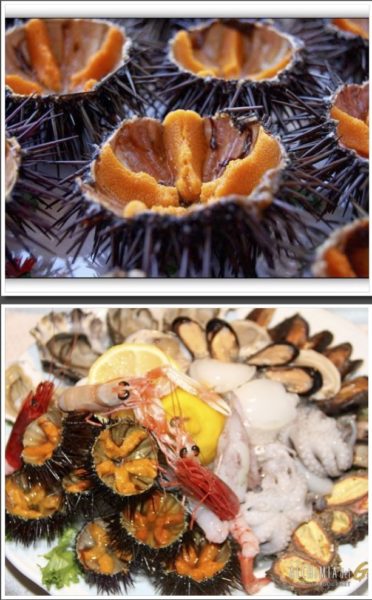
From the sea, besides spaghetti and risotti, the local street food gives you the pleasure to test fresh…and sometimes raw seafood.
In the morning, especially in Bari, the breakfast starts with, sea urchin, Ricci di Mare, and Altamura Bread, raw mussels, Cozze, small squid, shrimps, scampi, oysters and “spruenz” (sea sponge) served raw, and with some lemon. When you want to be ‘sophisticated’ with mussels, you add, pecorino, warm bread…and wine or beer. Open them and wash them directly in the sea. Obviously !!
Amateur or Matrician, Bucatini or Spaghetti?
One of the cornerstones of Italian folk cooking, Pasta alla Amatriciana or Matriciana, as the compatriots say, counts many recipes, all, according to the author of the turn, the right and the original, each with something more or something less.
We chose the most basic version, the most likely one, because otherwise, it would look like another old and very popular dish, which in Campania takes the name of Lardiata, with this name we wrote it long ago, the item you find it clicking; somewhat forgotten, was also prepared in the mountainous part of Puglia, A Past cu Lard, as well as in Lucania and Calabria, varying its name with dialects and inflections.
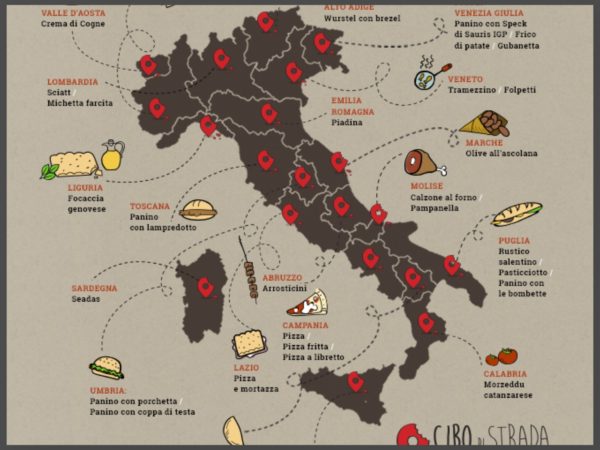
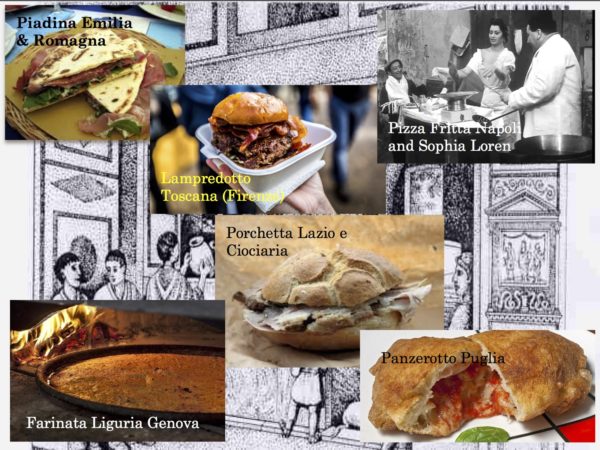
Italian art of cooking; culture, history and curiosity, from North to South
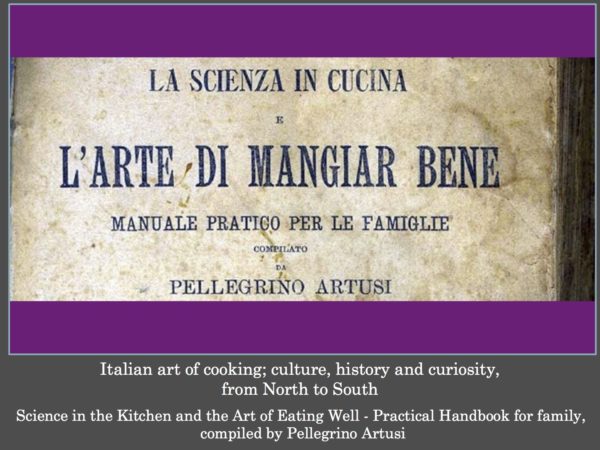
Science in the Kitchen and the Art of Eating Well – Practical Handbook for family, compiled by Pellegrino Artusi
Still today the volume counts a great number of editions and widespread distribution. It contains 790 recipes, from broth to liqueurs, passing through soups, hors-d’oeuvres (or well “beginners”), second dishes and cakes.
The approach is a didactic one (“with the practical manual – Artusi writes – it’ s sufficient to be able to keep a ladle in the hands”), the receipts are followed by the author’ s reflections and anecdotes, as he writes in a witty style.
“the kitchen science and the art of well eating” was a real boundary line in the gastronomic culture of the age.
Artusi is recognized as a tribute to having given dignity to that “mosaic” of regional traditions which for the very first were fully valorized at the level of the “national gastronomic tradition.
North Italian food:
Center of Italy
Coda alla Vaccinara – Porchetta – Eels –
Napoli – Borboni and the Sartu’ – Calabria Stoccafisso and Anduja
Pizza VS Pizza
South Italy
Aragosta – Fish – Pasta con Sarde – Palermo e Vucciria – Caponata
Who is the “controller” of the Italian people’s food hygiene?
The N.O.S., Nuclei Antisophistication and fraud and Health. This, military forces, Carabinieri, are like our Canadian RCMP.
The activity of N.A.S. they have always given rise to genuine admiration among the leaders of the Force, the Ministry of Health, among them traders and among the population, meeting everywhere with awards and certificates of merit.
MUSIC AND FOOD AND THE GREAT COMPOSERS ROSSINI, PUCCINI, VERDI, BELLINI WHAT DOES ITALIAN CUISINE HAVE IN COMMON THESE GREAT COMPOSERS?

THE PASSION FOR ”IL MANGIAR BENE”. THEY WERE: GOURMETS, EXCELLENT CUSTOMERS, FOR WHICH THEY HAVE CREATED:

“BELLINI” PASTA ALLA NORMA
“VERDI” FILLET OF BEEF ALLA VERDI
PUCCINI MANY RECIPES.
FOR “ROSSINI” TOUNEDOT ROSSINI, “BELLINI” PASTA ALLA NORMA, “VERDI” FILLET OF BEEF ALLA VERDI, and for PUCCINI MANY RECIPES.

Next Classes:
September 19 PASTA with: Chef Giovanni Trigona and Chef Sergio Cinti.
September 26 PANE, PIZZA and PASTICERIA , with: Chef, Fabrizio Busso, Chef Giuseppe Cortinovis and Chef Dario Rossi.
October 3 Wine & Food (Red wine with Fish), with Sommelier Taylor and Chef (Sommelier) Giovanni Trigona.
October 10 Gelato Gourmet with: Chef Giorgio Barassi and Cake Designer Daisy Barassi.
